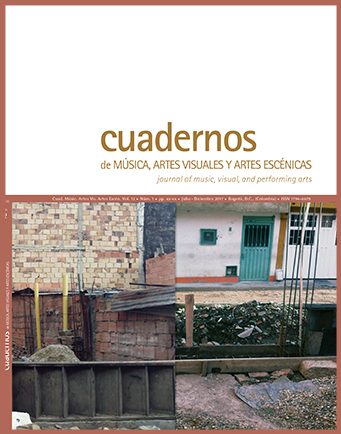Abstract
En este artículo, se pretende encontrar las relaciones entre los textos que Noé escribió entre 1975 y finales de la década de 1980 y la obra pictórica producida durante esos mismos años. Con una contextualización de tales textos y de las obras en el campo artístico argentino del momento, y con comparaciones con propuestas teóricas de otros autores contemporáneos como Arthur Danto o Francois Lyotard, podremos ubicar la particularidad de las propuestas de Noé y la manera en que funcionaban como reinterpretaciones de sus propias obras. Cuestiones como la relación entre la historia política y la historia del arte latinoamericanas, la cuestión del fin de una narrativa que englobara las búsquedas de los artistas desde el Renacimiento hasta la segunda mitad del siglo XX, entre otros puntos, serán los temas privilegiados. Noé, en sus textos, termina por insertar en las polémicas contemporáneas algunas de sus propuestas plásticas que habían surgido en contextos diferentes, reinterpretando ciertas búsquedas de estilo y temáticas, como la forma de representar el paisaje y la significación del “caos”. Así, el artículo se constituirá como un aporte a la investigación no solo de la trayectoria de Noé —cuyos textos han sido muy poco estudiados— como de las relaciones entre texto e imagen en el arte contemporáneo latinoamericano.
This journal is registered under a Creative Commons Attribution 4.0 International Public License. Thus, this work may be reproduced, distributed, and publicly shared in digital format, as long as the names of the authors and Pontificia Universidad Javeriana are acknowledged. Others are allowed to quote, adapt, transform, auto-archive, republish, and create based on this material, for any purpose, provided the authorship is duly acknowledged, a link to the original work is provided, and it is specified if changes have been made. Pontificia Universidad Javeriana does not hold the rights of published works and the authors are solely responsible for the contents of their works; they keep the moral, intellectual, privacy, and publicity rights.
Approving the intervention of the work (review, copy-editing, translation, layout) and the following outreach, are granted through an use license and not through an assignment of rights. This means the journal and Pontificia Universidad Javeriana cannot be held responsible for any ethical malpractice by the authors. As a consequence of the protection granted by the use license, the journal is able to publish retractions or to correct information already published. Publishing contents in this journal does not generate royalties for contributors.


